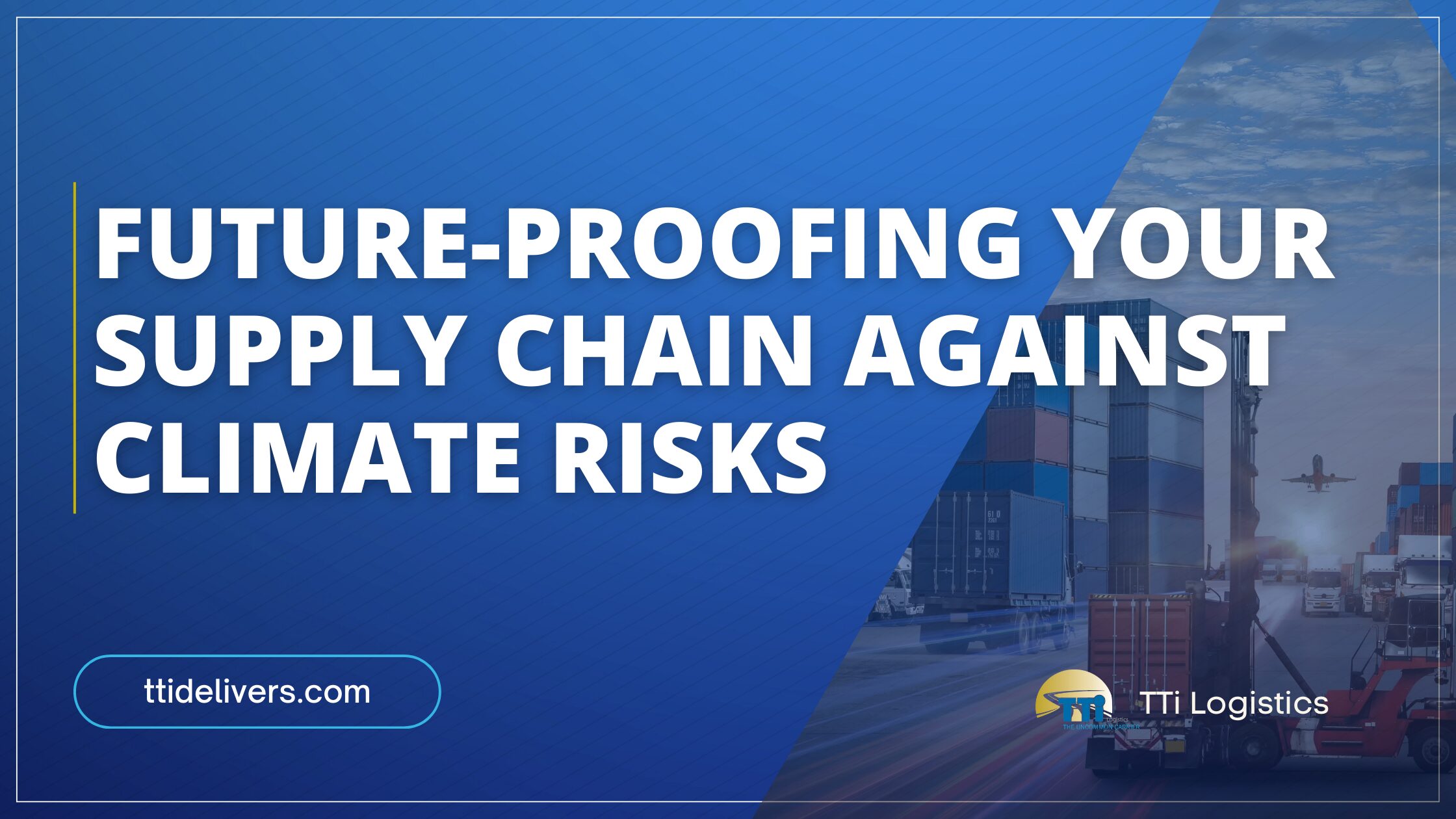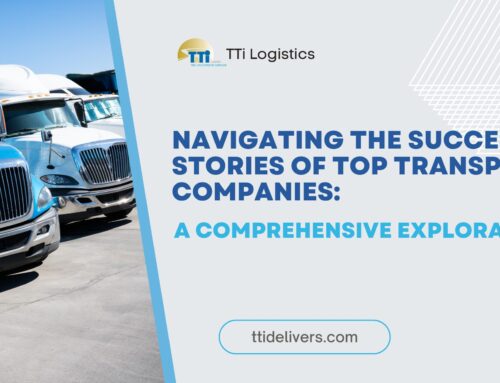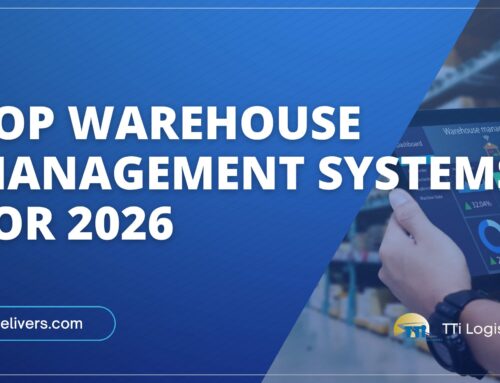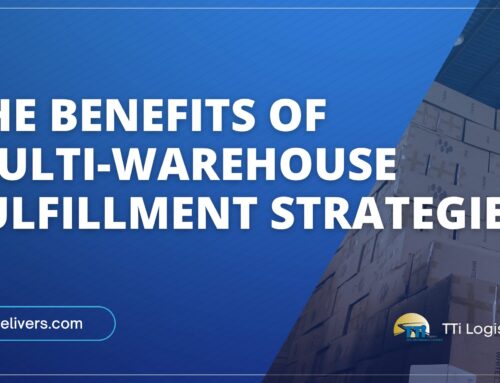Why Climate Resilience Is Now a Supply Chain Priority
Supply chain disruptions are nothing new. But in recent years, a new and more unpredictable threat has emerged: climate change. From devastating hurricanes and wildfires to rising sea levels and extreme temperature swings, weather-related events are increasingly affecting the movement of goods across the globe.
Businesses can no longer afford to treat climate-related risks as rare or isolated. The reality is that climate risks in the supply chain are becoming more frequent, more severe, and more expensive. In fact, research from the World Economic Forum ranks extreme weather and climate action failure among the top global risks for the next decade.
At TTi Logistics, we recognize the urgency of helping businesses adapt to this new environment. Our approach to logistics emphasizes flexibility, redundancy, and long-term planning—because future-proofing the supply chain is no longer optional.
How Climate Risks Impact Every Link in the Supply Chain
Climate change affects more than just transportation routes. It touches every part of the supply chain, from raw material sourcing to final delivery. Understanding where vulnerabilities exist is the first step toward building a more resilient operation. Below is a breakdown of how different phases of the supply chain are affected.
Upstream Risks
- Raw Material Shortages: Droughts, floods, and storms can destroy crops, disrupt mining, or damage key manufacturing regions.
- Supplier Instability: Smaller or less-prepared suppliers may shut down due to repeated climate events.
- Increased Lead Times: Ports and production facilities in high-risk areas may face longer shutdowns or reduced output.
Upstream impacts can result in significant delays before your production cycle even begins. Businesses that rely heavily on specific raw materials or single-source suppliers are particularly at risk during climate-driven disruptions.
Midstream Risks
- Transportation Disruptions: Flooded highways, damaged rail lines, and port closures can delay freight movement.
- Infrastructure Damage: Warehouses and distribution hubs can be rendered inoperable during major weather events.
- Fuel Availability and Costs: Extreme weather often leads to spikes in fuel costs or shortages that ripple across logistics networks.
These risks directly affect your ability to move goods efficiently. Without adaptive transportation strategies, businesses face costly bottlenecks and customer dissatisfaction.
Downstream Risks
- Unpredictable Demand: Weather events change customer behavior and disrupt normal ordering patterns.
- Increased Returns: Missed deliveries or damaged goods during extreme weather result in more reverse logistics.
- Brand Risk: Consumers and B2B buyers are increasingly aware of how companies respond to environmental crises.
Even if your operations are running smoothly, downstream impacts can affect customer satisfaction and perception. Poor performance during a weather crisis can lead to long-term reputational damage.
Types of Climate Risks Facing Today’s Supply Chains
Not all climate risks are the same. Understanding the types of threats your business might face can help you design targeted risk management strategies and prioritize actions. These risks fall into three broad categories: acute physical risks, chronic physical risks, and transitional risks.
1. Acute Physical Risks
Acute risks are sudden, high-impact weather events that can bring entire operations to a standstill. These events happen with little warning and can severely damage infrastructure, delay shipments, or halt manufacturing altogether.
- Hurricanes
- Floods
- Tornadoes
- Wildfires
- Blizzards
These disruptions are often short in duration but intense in damage. Businesses without contingency plans in place may take weeks to recover and face long-term financial consequences.
2. Chronic Physical Risks
Chronic risks develop gradually over time and may not cause immediate disruption—but their long-term effects can be just as damaging. These slow-building risks erode infrastructure, weaken efficiency, and increase operational costs year over year.
- Rising sea levels threatening port infrastructure
- Increasing heat waves causing vehicle or equipment malfunctions
- Ongoing droughts reducing access to critical raw materials
Because they evolve slowly, chronic risks often go unaddressed until they become serious. Companies that take early steps to adapt can avoid being caught off guard by compounding long-term threats.
3. Transitional Risks
Transitional risks involve shifts in policy, market expectations, and public perception as the world transitions toward a low-carbon economy. These are not physical disruptions but can significantly impact logistics operations and brand reputation.
- New emissions regulations affecting freight operations
- Pressure from investors or customers to reduce carbon footprint
- Increased insurance costs for high-risk shipping zones
These risks require careful planning and transparency. Companies that proactively integrate sustainability into their supply chains position themselves as leaders, while others may struggle to catch up.
How TTi Logistics Helps Clients Build Climate-Resilient Supply Chains
As a full-service logistics provider, TTi Logistics doesn’t just react to disruptions—we help clients proactively prepare for them. Our strategies combine technology, experience, and flexible operations to reduce climate-related vulnerabilities at every step of the supply chain.
Multi-Modal Shipping Flexibility
When one mode of transportation becomes unreliable due to weather or infrastructure issues, TTi quickly shifts to alternatives. This ensures continued movement of goods, no matter the situation.
- Rail during flooded highway conditions
- Air freight when sea routes are blocked
- Ground transport with rerouted carriers around affected zones
This agility ensures minimal disruption even during extreme events. Our ability to pivot quickly helps clients maintain delivery timelines and avoid costly delays.
Supplier Diversification and Redundancy
TTi encourages clients to build relationships with multiple suppliers across different geographic regions. This approach minimizes the impact of climate-related issues at any single location.
- Access to multiple vendors reduces dependency
- Cross-region supplier mapping enhances visibility
- Redundancy prevents production slowdowns
By spreading sourcing across locations with varied risk levels, businesses improve both flexibility and security in their supply chains.
Dynamic Route Planning
Using real-time weather and traffic data, TTi’s routing systems automatically adjust freight paths to avoid storm zones, road closures, or wildfire regions.
- Predictive analytics for route disruptions
- Real-time driver updates and rerouting
- Monitoring of backup warehouses and transfer points
These systems keep shipments moving even under difficult conditions, giving clients a strategic advantage when disruptions strike.
Strategic Warehouse Locations
Storing products in multiple regions reduces risk and improves speed. TTi helps clients maintain a flexible warehousing network that buffers against localized disruptions.
- Diverse locations spread risk
- Faster delivery to regional markets
- Less dependency on vulnerable zones
Distributing inventory gives businesses more options for fulfillment and lowers the risk of total service interruption.
Custom Contingency Planning
For high-risk products or time-sensitive shipments, TTi builds custom contingency protocols that help clients respond with speed and precision.
- Pre-approved alternate carriers
- Backup storage locations
- Priority access to limited freight space during emergencies
By planning for disruptions before they happen, clients can respond faster, limit financial losses, and recover sooner.
Steps Your Business Can Take to Prepare for Climate Disruptions
Even if your company isn’t directly in a high-risk climate zone, your supply chain likely touches areas that are. Taking proactive steps now can protect your business from future disruptions, reduce long-term costs, and improve operational resilience.
1. Map Your Supply Chain
Start by identifying every tier of your supply chain—not just your direct suppliers, but their suppliers as well. Map where they’re located and evaluate the environmental risks in those areas.
- Is the region prone to floods, hurricanes, or fires?
- Are ports and transportation hubs nearby vulnerable?
- Do your suppliers have backup plans or alternate locations?
2. Conduct a Risk Assessment
Use historical data and climate forecasts to evaluate your exposure. Focus on the specific elements that would cause the most disruption if compromised.
- Key routes and chokepoints
- Single-source dependencies
- Locations with limited access to alternative transport modes
This helps prioritize which areas need the most immediate attention and investment.
3. Diversify Your Network
Don’t put all your supply chain eggs in one basket. Diversify across suppliers, warehouses, and transportation modes to reduce reliance on any one system.
- Suppliers across geographic regions
- Warehouses in different climate zones
- Shipping modes (air, sea, ground, and rail)
4. Develop Scenario-Based Contingency Plans
Outline clear response plans for different types of climate disruptions. Collaborate with your logistics partners to build practical, real-world response frameworks.
- What happens if your main port is shut down for 10 days?
- Who do you contact first if your warehouse loses power?
- Which carrier has backup availability in a storm-affected region?
TTi Logistics helps clients create these frameworks based on real-world logistics experience.
Real-World Climate Events That Reshaped Supply Chains
Understanding how recent climate and geopolitical events have disrupted global supply chains underscores the urgency of preparation. These real-world examples highlight just how far-reaching the consequences can be when climate risks are not addressed proactively.
Red Sea Crisis (Late 2023 – Early 2024)
Geopolitical tensions in the Red Sea and Suez Canal region triggered one of the most significant global shipping disruptions in recent memory. Container traffic dropped by nearly 90% through the area, forcing carriers to reroute ships around the Cape of Good Hope—adding up to two weeks in transit time and substantially increasing fuel costs. Over $1 trillion in goods was delayed, affecting more than 60 countries. This crisis emphasized the importance of flexible routing and the ability to pivot quickl…
El Niño Agricultural Disruptions (2023–2024)
The 2023–2024 El Niño cycle triggered widespread droughts and floods across the globe, affecting key agricultural regions in Africa and Asia. India’s government banned exports of non-basmati rice to ensure domestic supply, while Zambia declared a national disaster as drought destroyed nearly half of its planted farmland. These events caused severe ripple effects across global food supply chains, increasing costs and creating shortages in multiple markets. The situation illustrated the dangers of over-…
Hurricane Helene (September 2024)
Hurricane Helene made landfall in the southeastern United States with devastating effects. Flooding shut down Baxter International’s North Carolina facility, which supplied over 60% of the U.S. market for IV and kidney dialysis fluids. The shutdown led to a nationwide healthcare supply shortage and exposed the vulnerability of single-source production in high-risk zones. This event reinforced the importance of redundancy and diversified warehousing for essential goods.
These cases demonstrate how extreme weather and climate-related instability can cripple supply chains without warning. Businesses that plan ahead with diversified suppliers, alternate transportation modes, and proactive contingency plans are best equipped to navigate disruptions and continue delivering value to their customers.
Climate-Conscious Customers Are Watching
It’s not just regulators and logistics partners who care about climate strategy—your customers and investors do, too. Whether B2B or B2C, buyers are becoming more aware of how companies manage environmental risks and responsibilities.
- Consumers expect transparency and responsible supply chain practices
- Investors favor companies with strong ESG (Environmental, Social, Governance) frameworks
- Brands that ignore climate risk may suffer reputational and financial losses
Proactively addressing climate risk isn’t just smart logistics—it’s also a smart business strategy that builds trust and future-proofs your reputation.
Benefits of a Resilient, Climate-Aware Supply Chain
- Fewer delays = Happier customers
- Improved brand trust and loyalty
- Eligibility for ESG-focused partnerships and contracts
- Stronger investor confidence
Positioning your company as a proactive, climate-conscious logistics leader can set you apart from competitors and open doors to new growth opportunities.
The Future Is Uncertain—But Your Supply Chain Doesn’t Have to Be
Climate change isn’t a distant threat. It’s here, and it’s already impacting how products move around the world. Whether it’s a flood closing a warehouse or a storm delaying a shipment, the costs of inaction are high.
But with the right logistics partner and a proactive plan, your business can stay resilient, responsive, and ready.
Partner with TTi Logistics
TTi Logistics doesn’t take a wait-and-see approach to climate risks. We actively:
- Monitor global weather patterns and forecast tools
- Work with clients to create flexible and diversified logistics strategies
- Offer scalable warehousing and shipping solutions that adapt to shifting environmental conditions
- Prioritize safety, communication, and recovery planning in every part of the supply chain
Our logistics experts work as an extension of your team—helping you navigate challenges and build long-term stability into your operations.







